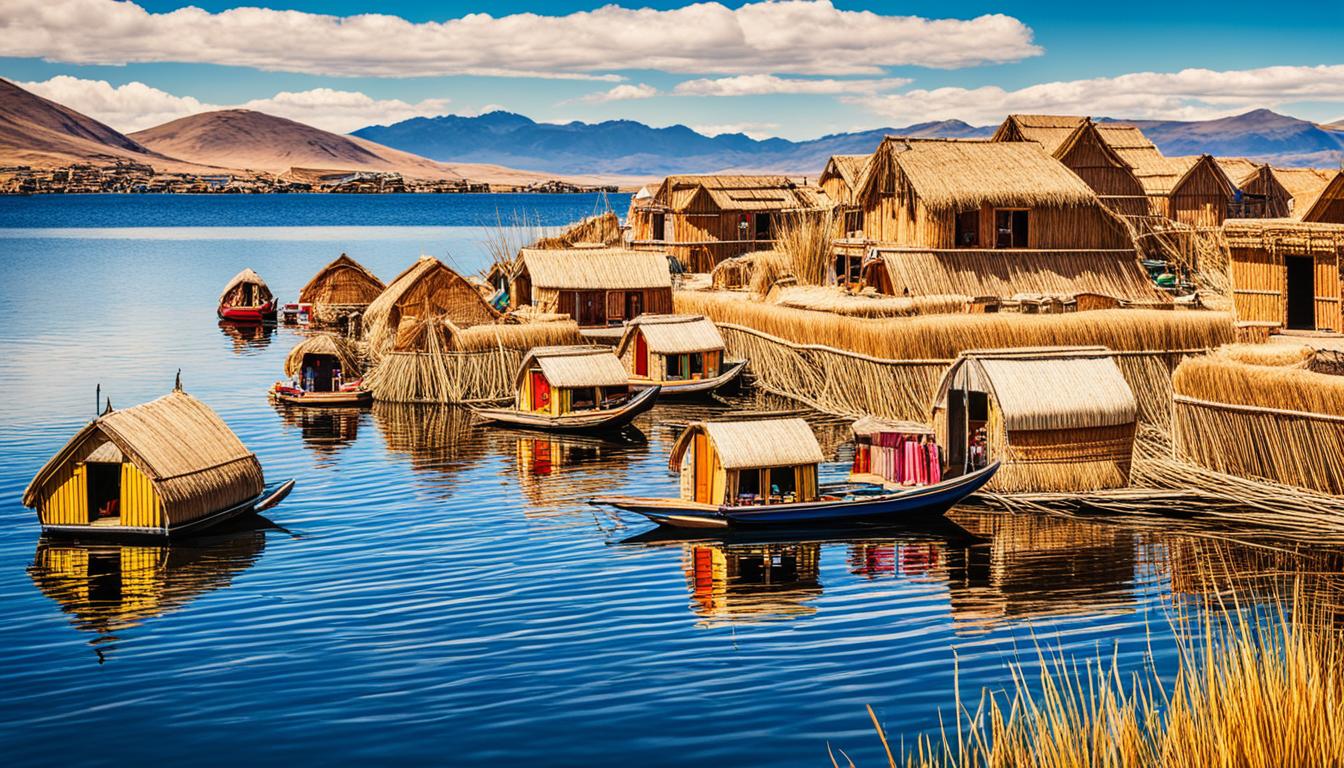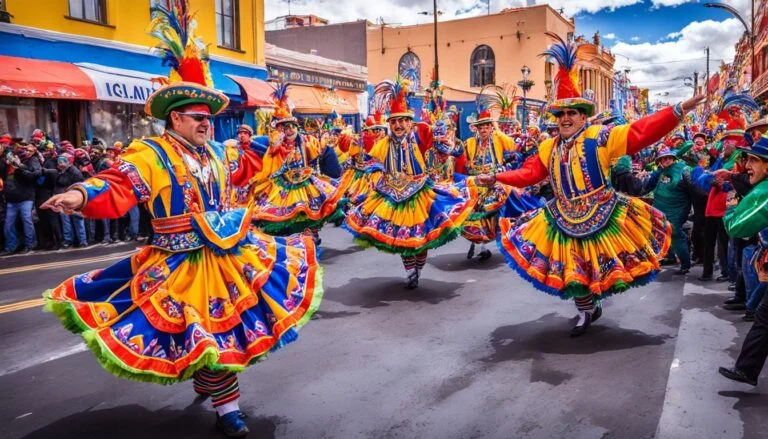Mystical Waters: Exploring Lake Titicaca and Its Cultural Islands
Picture a lake so high, it’s like touching the sky. It’s surrounded by snow-capped mountains, making you feel like you’re floating on top of the world. This place is Lake Titicaca, the highest navigable lake globally, located between Peru and Bolivia. It’s a stunning mix of ancient Inca civilization, rich cultures, and amazing nature.
Your journey often starts in Puno, a Peruvian city famous for the Fiesta de la Virgen de Candelaria. From there, you’ll take a boat to see the islands. You’ll explore Taquile, Amantani, and Isla del Sol, each with its own deep cultural roots. But, what ancient tales and secrets does this sacred lake hold?
Key Takeaways
- Lake Titicaca is the world’s highest navigable lake, situated between Peru and Bolivia in the Andes mountains.
- The lake is known for its stunning natural beauty, with snow-capped peaks surrounding the deep blue waters.
- Visitors can explore cultural islands like Taquile, Amantani, and Isla del Sol, which offer a glimpse into the region’s ancient Inca heritage and vibrant indigenous communities.
- The city of Puno on the Peruvian side of the lake is renowned for its annual Fiesta de la Virgen de Candelaria celebration.
- The Uros people have created a unique way of life on floating islands made of reeds in the middle of Lake Titicaca.
Unveiling the Mystique of Lake Titicaca
Lake Titicaca is a stunning high-altitude lake right on the border of Peru and Bolivia. It plays a key role in Inca Empire history. Legend has it that Viracocha, their god of creation, came out of this lake. He brought the sun, moon, stars, and us. This event is said to have jump-started the Inca civilization.
Birthplace of the Inca Civilization
The Inca folks thought of Lake Titicaca as the very spot where their empire began. Near its shores, they built significant religious and governing sites, including the ruins of Tiwanaku. These ruins, at the lake’s south, show the smarts and skills of the Inca and those before them. They stand as proof of a once-thriving civilization.
Ancient Ruins and Cultural Heritage
The UNESCO-listed Tiwanaku ruins showcase the area’s deep cultural roots. Tourists can see incredible stone works and grand gateways. These structures tell of the Tiwanaku people’s abilities, predecessors to the Inca. Besides these ruins, the lake area is alive with cultures like the Quechua and Aymara. They continue their traditional lifestyles, offering a living history lesson.
Floating Islands and Indigenous Communities
The Uros floating islands are a standout on this lake. Home to a distinct group, these islands are made from floating reeds. It shows how adaptable and smart the Uros are. They’ve lived around Lake Titicaca for ages.
Your adventure around the lake should also include Taquile and Amantani islands. These islands, on the Peruvian side, are famous for their fine textiles and knitting patterns. UNESCO has even named their craft a masterpiece of human heritage. This adds to the area’s rich cultural story.
Lake Titicaca: A Tapestry of Nature and Culture

Located between the Cordillera Real mountains and the Altiplano plateau, Lake Titicaca is a wonder. Its beauty draws people from all over the world. The area’s perfect mix of grand and calm scenery is truly spellbinding.
Majestic Landscapes and Stunning Vistas
The Sun Island (Isla del Sol) is a highlight on Lake Titicaca’s Bolivian side. It has deep connections to Inca culture, said to be Inti’s birthplace. Visitors can see old ruins, walk on beautiful paths, and enjoy amazing views of the Altiplano and the lake.
Sacred Sites and Spiritual Significance
Lake Titicaca isn’t just about natural beauty. It’s a key place for the Quechua and Aymara people and their traditions. Noteworthy festivals include the Inti Raymi festival and the Virgen de la Candelaria festival. They are special times when visitors can experience local culture and spirituality.
The lake area is also rich in wildlife. It’s home to the Titicaca water frog and the Andean flamingo. These unique creatures thrive in the Altiplano’s high-altitude setting.
Conclusion
Lake Titicaca is a tapestry full of vibrant festivals and rich cultural heritage. These capture the hearts of visitors worldwide. The Virgen de la Candelaria festival and the Feast of the Sun on Isla del Sol are key events. They let people dive into the local culture and see how deep their spirituality goes.
Visiting Isla del Sol and Isla de la Luna is a magical experience. These islands connect you with the ancient roots of the Andean people. Known for their myths and legends, they welcome you to see ancient ruins, hike beautiful trails, and take in stunning views of the lake and mountains.
Whether it’s the culture, natural beauty, or spirituality that draws you in, Lake Titicaca is a journey worth taking. You will find it a life-changing trip that engraves lasting memories for all who visit.






